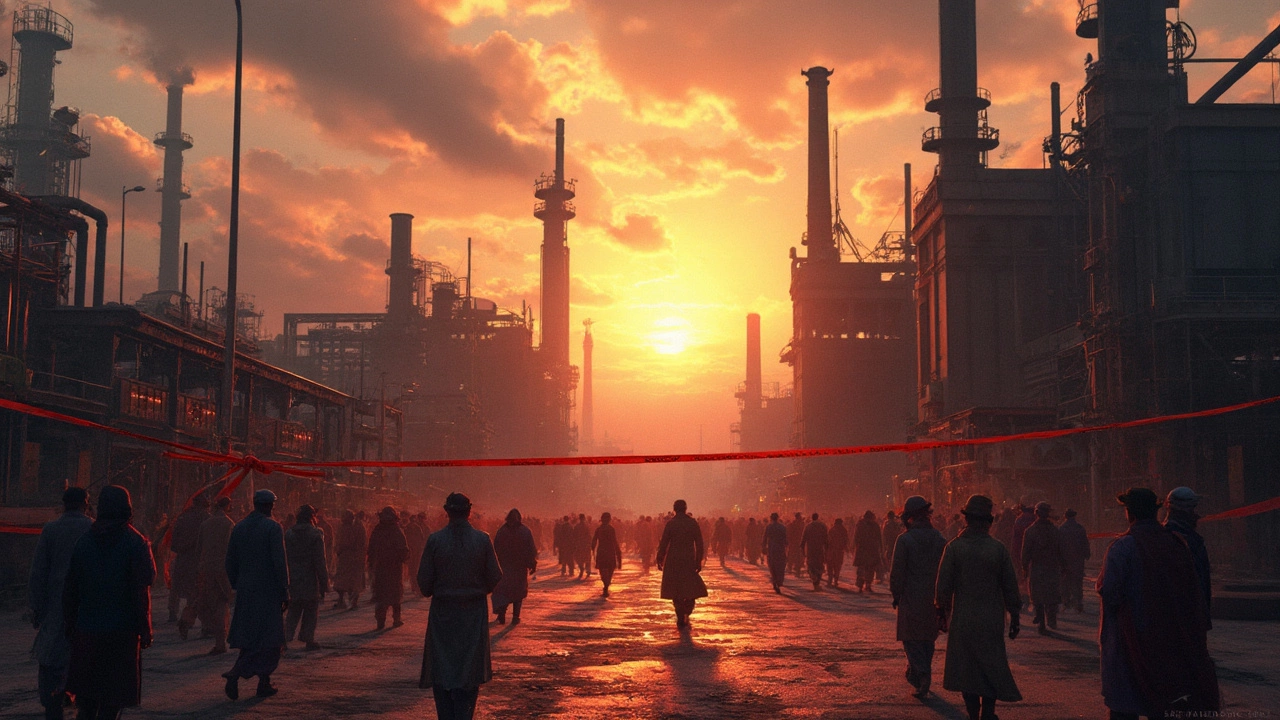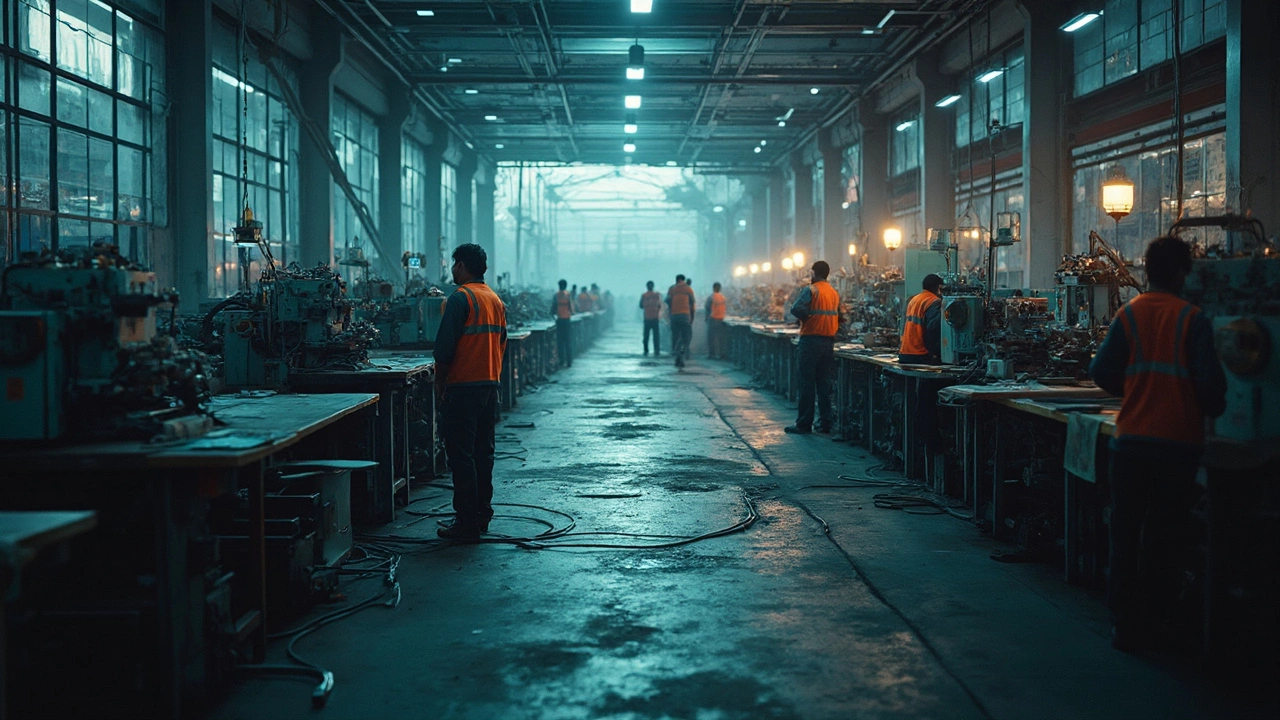Why India Isn’t the World’s Manufacturing Hub: Deep Dive Into Challenges & Real Solutions

India always gets mentioned in the same breath as China because both are huge countries with giant populations. But something just doesn’t add up when you drive around the outskirts of Bengaluru or take a train past the dusty edges of Delhi. Where’s the endless row of smoky factories, the buzzing conveyor belts, and the glitzy industrial zones you’d expect in a would-be manufacturing powerhouse? India has brains, brawn, ambition, even policies that talk a big game. But walk around any small-town industrial area and you end up with one big question: Why does the ‘factory of the world’ title never seem to land here?
Patching Up the Pieces: India’s Manufacturing Puzzle
Look at the numbers. India’s manufacturing sector contributed just about 17% to its GDP as of 2024. Compared to China—who sits at roughly 28%—it’s a glaring gap, especially given India’s youth-driven, working-age population. As a kid, I was stunned by TV reports bragging about India making satellites and metro trains. But if you hunt for an Indian-made phone or a truly ‘local’ car, the ground reality quickly wipes away any rose-tinted glasses.
Policies like “Make in India” have been big on promises. They launched with splashy ads, politicians at shiny machinery, and hashtags everywhere. On paper: great. In practice? Job creation and exports haven’t exploded as expected. Some bright spots exist—mobile phones, two-wheelers and some chemicals—but India still imports a mountain of components, even for its best-selling ‘Indian’ brands.
Here’s something I noticed: Whenever I talk to engineers or suppliers in Gurugram or Pune, they’re quick to list reasons why manufacturing feels like solving a puzzle where the pieces come from a dozen different puzzles.
- Unpredictable regulations—state to state, week to week.
- Bureaucratic paperwork that slows shipments for days.
- Sticky land acquisition that turns setting up a factory into a years-long chess match.
- Costs for things as basic as electricity regularly shooting up out of nowhere.
It often feels like the system is designed for constant adjustment, not for bold building. The result: huge factories stay rare, smaller workshops focus on local demand, and the country imports laptops, chips, and car parts like there’s no tomorrow.
The Red Tape Maze: Bureaucracy Bites
India’s red tape is legendary—almost every manufacturer, big or small, has tales of being trapped in paperwork. Every week feels like a marathon of forms: environmental clearances, tax compliance, labor law registrations, pollution permits, local permissions for trucks. In fact, according to a 2023 CII survey, manufacturers spend nearly 20% of their project time just fighting through regulatory approvals. That’s months lost before a single widget gets made.
Compare this to Vietnam or the UAE, where government approval for a new factory often takes days, not months or years. Even when a global giant like Apple tries to ramp up iPhone assembly in Tamil Nadu, endless compliance rules mean each step gets slowed down by a committee, a sign-off, or a department head who’s on vacation. For smaller businesses, the paperwork overload acts as a wall—it’s easier just to import cheaper finished goods from China or ASEAN neighbors.
There’s also a complicated tax structure—states and the union government both want a share of the pie. GST, meant to simplify things, sometimes does the opposite with classifications that change mid-project. It’s no surprise large companies often hire “fixers” or entire teams just to manage red tape. Imagine how tough it is for a small business owner in Ludhiana trying to export bicycle parts. Many end up stuck catering to the local market, never daring to scale up their ambition.

Infrastructure: The Long, Bumpy Road
Infrastructure is where things start to feel personal. My friend Sameer wanted to set up a precision tools factory outside Chennai. Half his energy went into fixing power outages—his machines would stop halfway, ruining expensive metals. The rest of his time? Negotiating terrible rural roads that chewed up his supply trucks and delayed every shipment.
Let’s put numbers on it. According to the World Bank’s Logistics Performance Index for 2024, India ranks 38th worldwide. Sure, it’s better than a decade ago, but China sits at #9, South Korea at #19, Malaysia at #26. Wasted hours in traffic jams, containers stuck at ports for days, and unreliable rail links push Indian production costs way up.
And don’t get me started on electricity. Despite being one of the world’s largest power producers, Indian manufacturers still face blackouts, voltage dips, or sudden hikes in tariff. Diesel generators fill the gap, but they hike costs and pollute the environment. Water is another sore point: textile factories in Tamil Nadu have been forced to buy tanker water because local supply just dried up. Many major manufacturing cities like Chandigarh, Kanpur and even Gwalior face water scarcity that’s set to only get worse.
Here's a quick look at data that isn’t talked about much:
| Country | Manufacturing share of GDP (2024) | Avg. Electricity Cost (USD/kWh) | World Bank Logistics Index Rank (2024) |
|---|---|---|---|
| China | 28% | 0.08 | 9 |
| Vietnam | 25% | 0.07 | 40 |
| India | 17% | 0.13 | 38 |
Getting goods from Surat to Singapore can take longer than shipping from Shanghai, even though the distance is much less. Ports like Mundra and Mumbai are getting better, but the last-mile connections just aren’t there yet. The bottom line: Infrastructure is a make-or-break factor and India’s just hasn’t caught up with its ambitions.
Skills Gap and Labor Woes
This part stings. On paper, India should have the world’s best manufacturing workforce—millions of young people, eager to earn. In reality, there’s a huge skills mismatch between what industry needs and what most workers have. Companies like Foxconn and Hyundai (who run big plants in southern India) spend big on training, but complain that even engineering graduates often need months of reskilling before they’re factory-ready.
The National Skill Development Corporation’s 2024 report paints a hard truth: less than 20% of the manufacturing workforce is formally skilled. Compare that to 70% in China, or almost 90% in Germany’s manufacturing muscle. Lack of practical, hands-on technical training turns what could be a demographic dividend into frustration and lost productivity.
Labor laws are another minefield. Companies employing more than 100 workers face a maze of regulations that make hiring or firing difficult. There are over 200 forms to file and nearly 40 inspectors to answer to, depending on the state. Many manufacturers ‘stay small’ on purpose: fewer employees mean less hassle. Others rely on contract labor, which fuels job insecurity and lowers morale, leading to less pride in workmanship.
Cultural factors play a tiny part too. In my experience, there’s still social pressure on young people to seek out government jobs instead of skills-based manufacturing roles. When my cousin’s son said he’d join an auto-parts plant in Pithampur, aunties and uncles frowned—but nobody blinked when his friend crammed for the railway board exam.

What Needs to Change: Ideas for a Real Manufacturing Leap
India won’t become a manufacturing hub overnight, but if there’s any country that can turn big problems into big comebacks, it’s this one. Here’s what the country needs—based not just on policy, but on chats I’ve had with business owners, engineers, and even young welders from Indore to Chennai:
- Cut the red tape ruthlessly. Move towards single-window clearances and digitized paperwork—no exceptions. If Vietnam and Poland can do it, so can India.
- Massive, fast infrastructure upgrades—not just highways, but reliable power, water management, modernized ports. Even a 10% reduction in logistics costs can set off an export boom.
- Real apprenticeship and skills programs. Companies need to partner with polytechnics so kids build parts, not just memorize diagrams in dusty books.
- Simplify (and update) labor laws for the 21st century, rewarding those who hire and train, not those who stay tiny.
- Promote homegrown tech innovation—India already leads the world in digital payments and space launches, so why not next-gen manufacturing tech?
- Incentivize local manufacturing of high-tech components, not just assembly. Instead of importing every chip and module, India can foster its own electronics ecosystem with the right policies and partnerships.
There’s a silver lining. Rising labor costs in China, the global push to diversify supply, and trade tensions mean the world is watching India—not just for software, but for factories, too. In April 2025, I read that Tesla was negotiating with Telangana for a battery plant, and companies like Samsung, Apple and Toyota are already producing key products here. If these investments go beyond mere assembly lines, India could really leap into a new era.
The world’s not short of demand. The question is whether India can create the setup that lets its youth, entrepreneurs, and inventors actually supply it. Whenever Neha and I discuss our travels, I see it—the desire to buy something ‘made in India’ that’s truly world-class. Here’s hoping more of those dreams turn into reality, both for us and for every family hoping for a better job and a brighter future at home.

